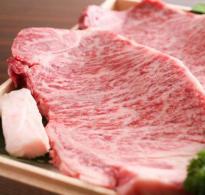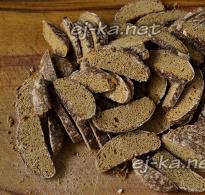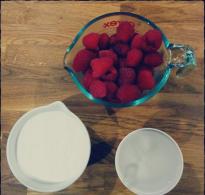Which low-fat cheese for diet. List of low-fat cheeses: names, composition, method of preparation
Calorie content (energy value) of food is the amount of energy received by the body after its complete absorption. In order to determine energy value product, it is burned in a calorimeter. Then the amount of heat released into the environment is determined. If a person eats more calories per day than he expended, excess weight appears.
The maximum amount of calories is produced in the process of digesting fatty foods, and extra “folds” appear on the body. Dreaming of getting rid of several extra pounds, you need to select low-calorie foods. It is customary to call a diet rational if it implies compliance with the proportion between animal and vegetable proteins of 55% to 45%, vegetable and animal fats as 30% to 70%.
Diet foods are foods with a negative or minimal amount of calories. Dietary nutrition involves consuming a significant amount of liquid, at least 1.5 liters per day, and low-calorie foods.
Is it possible to lose weight by eating cheese?
Cheese is an unsweetened dairy product that contains a significant amount of protein. Among the main disadvantages of cheeses, high fat content should be noted. Increased calorie content of this product for a long time made it inappropriate for dietary nutrition.
Currently, special diets are offered that allow the use of special varieties of cheese with low fat content.
The problem of buying low-fat cheese
What is the effectiveness of the cheese diet? Similar to various protein foods, you can try the “cheese” option for weight loss.
Among the tested and effective options for the cheese diet, one can note the 7-10 day low calorie diet based on cheese and other protein products, implying additives from vegetables and fruits. The calorie content of this nutrition option is 1500-1900 kcal, additional physical activity is assumed. Staying on such a diet for 10 days allows you to reduce weight by 3-5 kilograms. This type of nutrition is not balanced, however, it gives excellent results.
Less common are longer cheese diets, which involve strict restrictions on the type of cheese consumed. Options with minimal fat content are rarely found on the shelves of regular grocery stores. Mostly, customers are offered varieties of cheeses with a fat content of more than 40%. For example, such a popular cheese as “Maasdam”, which has a fat content of 45%, has a calorie content of 348 kcal per 100 grams. Such characteristics do not allow us to consider that he is the most low calorie cheese, and it is not worth recommending it for dietary nutrition.
How to choose low-calorie cheese?
For a long time, nutritionists have not been able to decide on the type of cheese with the lowest calorie content; their opinions differ. The line between “diet” and “regular” cheeses is set at 30 percent. Some cheese manufacturers indicate the fat content of their product at 29%, but the calorie content will be about 360 kcal, which exceeds the calorie content of the Maasdam described above. Do not forget to make sure that the product has the “correct” numbers, because otherwise you risk not losing weight, but gaining extra pounds.
Eight of the lowest fat cheeses
We list some options for low-calorie cheeses, the use of which will help you stay slim and beautiful figure. To do this, instead of Roquefort you need to take curd cheese. You can find such products on the shelves of large supermarkets:
Choosing a low-fat one light cheese, do not forget that for weight loss, only maintaining a sense of proportion in the process of “eating light cheeses” will give desired result– weight loss. AND cheese diet does not mean that you should eat only cheese - you need to combine it harmoniously with a large number vegetables and fruits.
– the diet followed by people with diseases of the liver, biliary tract and gall bladder is a restriction in fats and cholesterol-containing foods. In the article "" I wrote that hard cheeses differ high content squirrel, minerals, milk fat and cholesterol.
You obviously can’t eat much of this product, considering that daily norm fat is limited to 90 grams, 30 of which must be of vegetable origin. What should I do? Is it really possible to retire cheese from its position as the main morning product? First, try looking at a different shelf in the store. As an alternative to Goudas, Emmentals, Dutch and others high-calorie cheeses I offer dietary Adyghe, ricotta and feta.
Feta – 290 kcal, fat content – 24%, proteins – 17 g
Let's start from the end: the top five low-fat cheeses is closed by feta - the one without which it is impossible to imagine Greek salad. The fat content of feta can reach up to 50%; we are satisfied with the option with 24%.
Let me make a reservation right away: table No. 5 does not allow overtly salty cheeses, like feta cheese. Feta, although stored in brine, is tender in taste. Therefore, there is no strict ban on it.
Feta takes a lot from sheep's milk, which is its base. This cheese is rich in beta-carotene and vitamins A, E, K, D, group B, phosphorus, potassium, magnesium, iron, manganese, selenium, but most of all it contains calcium and sodium.
Useful lactic acid bacteria there is so much in feta that it is quite enough to eliminate gastrointestinal disorders, including those caused food poisoning. True, only feta made from natural and unpasteurized sheep’s milk has such properties.
Mozzarella – 160-280 kcal, fat content – from 17 to 24%, proteins – 28 g
Italian mozzarella, purely formally, is in fourth place in our ranking. In fact, it shares the same position with feta, since its fat content can reach the same 24%. But if you try, you can find a more dietary product with 17% fat content.
What's good about mozzarella? This young one soft cheese goes well with almost all vegetables, herbs and even berries. Like anyone natural cheese, mozzarella is rich in phosphorus and calcium, contains easily digestible protein and healthy fatty acids. However, it is worth noting that mozzarella is not a source of beneficial lactic acid bacteria: milk for it is fermented using rennet enzymes, without additional microflora.
! Natural mozzarella has a very short shelf life - 5-7 days.
If the label indicates an expiration date of more than a week, preservatives have definitely been added to such mozzarella.
Adyghe cheese – 240 kcal, fat content – 14%, proteins – 19 g
Next in line is Adyghe cheese. As for me, this is ideal option for breakfast. The previous two options are associated, rather, with afternoon tea or five o'clock tea - that's more light meal. It’s easy to start your day with Adyghe. It, unlike mozzarella, is produced by introducing lactic acid bacteria into pasteurized milk. At the same time, the taste is almost the same as its Italian counterpart.
Adyghe cheese is an integral part of the diet not only of patients following diet No. 5, but also of everyone losing weight. It contains only 14% fat, 19 grams of protein and no carbohydrates at all.
Ricotta – 172 kcal, fat content from 8 to 24%, proteins – 11 g
Our rating of the lowest-fat cheeses is headed by Italian - ricotta. It's often called cheese, but let's be honest, it's more like cottage cheese. Ricotta is made from whey that remains after preparing other cheeses - mozzarella, for example. It does not contain ordinary milk proteins, only albumin protein, which is present in human blood (therefore its absorption occurs faster and easier).
What cannot be taken away from ricotta are useful microelements, vitamins and calcium. Cheese from cow's milk– 8% (for comparison from goat – up to 24%).
! Soft variety Ricotta has a shelf life of no more than 3 days; hard ricotta can be stored for up to two weeks.
Tofu – 72-90 kcal, fat content up to 5%, proteins – 8 g
I’ll also say something about soybean cheese – tofu. Yes, it has the lowest fat content among all the cheeses I have listed and should be in first place, but there is one “but”: tofu promotes excessive gas formation, and therefore in case of gastrointestinal diseases you need to eat it in very limited quantities.
For the rest of the tofu there is no price. It is an antioxidant that removes dioxin, which causes cancer, from the body, and also reduces the level of “bad cholesterol”. At the same time, tofu is not just a dietary product, but a super dietary product: calorie content - 73 kcal, proteins - 8 g, fats - 4.5 g, carbohydrates - 0.8 g. So occasionally, for variety, you can indulge in tofu. Adding it to salads is a nice thing, I tell you.
To summarize: best fit into the criteria of the fifth diet Adyghe cheese and ricotta. They are not salty, not fatty, do not contain much protein and are great for breakfast. Just what the doctor ordered. Just don’t forget to count calories every day (it’s more convenient to do this with the help) and take them. Like diet, it is an integral part of a liver recovery program.
10 chosen
The term "low-fat cheese" sounds like an oxymoron, because cheese, by definition, cannot exist without fat. However, there are varieties of cheese with reduced fat content. Which varieties are ideal for women on a diet?
To eat or not to eat? That's the question
Many nutritionists are categorically against including any cheeses in the diet. And completely in vain. Firstly, cheese is rich in vitamins A, B2, B12 and D. Proteins, as well as amino acids contained in cheese, are perfectly digestible, unlike “meat” protein. There are no carbohydrates in cheese, but there is a lot of calcium and phosphorus, which affect the condition of teeth and skin.
In addition, American scientists came to the conclusion that calcium, which is especially rich in little fatty varieties cheese, helps break down “those wrong” fats. Accordingly, diets that include 100 grams of low fat cheese per day, twice as effective as other diets! By the way, calcium is known to be an extremely capricious element in terms of absorption. Therefore, it is best to combine cheese with herbs: cilantro, parsley and dill. Will also help with calcium absorption grape leaves, nuts and green grapes.
When fatness goes off scale
We often hear about different percentages of fat in cheese. What percentage should you believe? What kind of dry matter? The percentage of fat in dry matter is most often indicated on cheese packaging. That is, much higher than the real one, since the dry matter in finished product no more than 65%! This means that if the package states a fat content percentage of 60, then the cheese itself contains no more than 20-30. Exception - processed cheese, but it’s definitely better to exclude them from the diet.
 What types of cheese are safest for your waistline?
What types of cheese are safest for your waistline?
1. Ricotta (fat content - 13%)
It is impossible to imagine an Italian breakfast without ricotta. It is prepared not from milk, but from whey.
One slice will cost you 49 calories, but it will make you feel full and even protect your liver, thanks to the content of methionine, a sulfur-containing amino acid.
2. Hard and semi-hard cheeses (fat content from 9%)
If you like traditional cheese, don't forget to pay attention to their fat content. Advantage traditional cheese the fact that the amount of salt in it does not go off scale. The Oltermani company, for example, released a light cheese with a stated 9% fat.
3. Cheese and feta “light” (fat content - 5-15%)
In addition to myths, Greece gave the world magnificent cheese, or rather feta cheese. Certainly, classic feta high fat content won't suit us, so we'll have to work hard to find a lighter version. The light version is prepared, unlike traditional feta, not from sheep's milk, but from goat's milk, and has a quite suitable fat content.
4. Tofu (fat content - 1.5-4%)
Tofu is made from soy milk. In color and consistency it resembles feta cheese. In addition to the fact that tofu is a storehouse of easily digestible proteins and calcium, it contains only 90 calories per 100 grams! Not bad for cheese. In addition, tofu lowers cholesterol levels, thereby protecting against cardiovascular diseases.
5. Cottage cheese (fat content - 5%)
In England, country or "cottage" cheese is called cottage cheese. In fact, this cheese is low-fat cottage cheese. Calorie content fluctuates around 85, so it is recommended for the most strict diets. The curd grain is mixed with salted cream and it turns out the most delicate product, which can be added to a salad or consumed on its own.
6. Semi-hard Gaudette cheese (fat content – 7%)
The new miracle cheese from Scherdinger contains only 7% fat (15% dry matter). In addition to its low fat percentage, this cheese has pleasant taste, which is important on a diet, is easily digestible and enriches the body with calcium.
7. Chechil (fat content - 5-10%)
Chechil is a pickled cheese variety. Chechil's braids have gained the love of many. This cheese is matured in brine, so it does not contain a large amount of fat. But the salt in such cheese is from 4 to 8 percent. If you want to rid your treat of excess salt, nutritionists recommend soaking the pieces of cheese in water for a few minutes before eating.
8. Fitness cheeses (fat content 5-10%)
A real find for those losing weight. Often the label indicates the percentage of yogurt, not even fat. Low-calorie and easily digestible product. Many large manufacturers have fitness versions of cheeses. For example, Viola and Grunlander.
Are you a "raw foodist"? Or are you calm about a product that is so loved in France and Switzerland?
If you are using any kind of diet for weight loss or just trying to eat right, you should not eat only low-fat foods, because...
The only thing is that you need to choose products with a low percentage of fat, they are lower in calories. The list below will help you with this - list low-fat varieties cheese.
As you know, cheese is a healthy, easily digestible product, it contains a lot of protein for the structure of muscle tissue (more than in fish or meat), calcium, zinc, phosphorus, vitamins E, C, A, D, PP, group B.
However, it is necessary to distinguish between low-fat and fatty cheeses. Most of the cheeses we are used to have a fat content of 50-70% (50-70 grams of fat per 100 grams of product). The task of a person who cares about his appearance and figure is to consume cheeses with a maximum fat content of 30%.
Low-fat cheeses and their calorie content
First on our list is soy cheese Tofu. This cheese has a fat content of 1.5 to 4%. It contains in large quantities and is an alternative to meat protein. The calorie content of this cheese is 80 kcal per 100 grams. Ideal in the form of sandwiches for a snack, as well as a valuable ingredient in salads.
Ricotta cheese is not made from skim milk, as many believe, but from whey, which remains during the preparation of other types of cheese. Its fat content is 8-13%, and its calorie content is 174 kcal. Contains in addition to calcium, vitamins A and B, essential amino acid methionine is the most important amino acid for the liver. This cheese is often used in the form of salads, desserts and as an independent snack.
Mozzarella It is also made from skim milk. Usually sold in the form of balls saline solution. Contains 22.5% fat, 149-240 calories, depending on the type of mozzarella.
(grain cheese) looks like grains from cottage cheese, cooked in salted fresh cream, its fat content is no more than 5%, calorie content is up to 125 kcal. They season salads and are also used as independent dish. It is also often called homemade or country cheese (cottage cheese in the West).
Cheese Chechil also applies to low-fat varieties of cheese (only 5-10%). The consistency of this cheese resembles Suluguni. It is produced in the form of dense fibrous threads, which are twisted in the shape of a pigtail. It contains large quantities of salt, as it ripens in a salt solution; it is also often sold smoked. Contains 313kcal.
Low-fat cheeses Valio Polar, Fitness, Grünlander contain approximately 148 kcal with a fat content of only 5-10%. You just have to look for them in expensive supermarkets or hypermarkets. And read the packaging, some of them may contain not 5% fat, but 5% yogurt.
Feta or light cheese. Many people consider feta cheese dietary product, they love it in salads, especially in Greek, but the calorie content of ordinary cheese is 250 kcal with a high percentage of fat content. An alternative has appeared in stores: feta light (light cheese), its fat content ranges from 5 to 17%, calorie content on average 160 kcal.
Low-fat cheeses Arla, Natura and Valio, Oltermanni. They taste like fresh milk, an excellent product for those who are trying to eat right and maintain their figure. The calorie content of such cheeses is 210-270 kcal and 16-17% fat content. 
 Cheese Valio, Oltermanni
Cheese Valio, Oltermanni
Suluguni is a Georgian pickled cheese. Its fat content is 24%, calorie content is 285 kcal.
I think that in this list of low-fat cheeses you will be able to choose “your” cheese for yourself, which will satisfy you and taste qualities, and the benefits it will have on your body.
Bon appetit!
Correct and dietary food- it's a way of life. In this regard, many people are interested in what is the lowest fat cheese. It is important to understand what low-fat means. As you understand, a fermented milk product cannot be completely devoid of fat. Let's look into this issue.
List of cheeses with fat content up to 10%
Cheese from low-fat cottage cheese is a fermented milk product that contains no more than 20% fat. If the fat content varies from 20 to 30 units, then such cheeses are classified as light dietary products. And when fat mass exceeds 30%, such fermented milk products Even with a stretch, they cannot be called dietary.
Palm on dietary table cheeses are obtained whose fat content does not exceed 10%. Tofu cheese can boast of low calorie content. It is cooked on soy based, the fat mass in it varies from 1.5 to 4%. It is this type of cheese that has gained great popularity among those losing weight.
Note! Despite the minimal concentration of fat, the cheese of the above variety is enriched with useful micro- and macroelements, in particular calcium.
Second place on the podium grainy cottage cheese. Most often, such a product contains no more than 5% fat. It can be called nutritious, but at the same time dietary.
In third place is another famous low-fat cheese. The names of its varieties will help you quickly navigate and choose the right dish. Thus, approximately 7% fat is contained in Gaudette cheese. In everyday life, this cheese product is known as “Gouda”.
Many gourmets love cheese in the form of a braid. Most often it is served to the table as an appetizer for foamy drinks. Despite the level of salinity, such cheese is considered a dietary product, because the mass of fat in it varies from 5 to 10%. The Chechil variety of cheese is most often found on supermarket shelves.
More than 10% - a lot or a little?
Skim milk cheese, like products made from whey, can be easily found on supermarket shelves. Please note that even with a fat concentration of 10 to 20%, the product is considered dietary and low-calorie.
Italians are very fond of Ricotta cheese. It is prepared on a whey basis. The proportion of fat in the described product reaches 13%. Despite this figure, cheese is very healthy, because it contains many useful substances, vitamins, micro- and macroelements.
On the next step there is Oltermani cheese. The fat mass in this dish is about 17%. The above delicacy is not very popular.
And now it’s time for all cheese lovers to rejoice. This cheese with amazing taste and culinary experts all over the world add aroma to salads. If you are closely watching your figure, then it’s time to include cheese in your diet. This product can be classified as a cheese with minimal fat content: its level varies from 10 to 15%.
It is worth mentioning the Feta cheese. Depending on the production method, this cheese can be fatty and high in calories. Manufacturers offer a special product called “Light”. The fat content of such cheese varies between 28-30%.
Cheese "Adygei" can also be classified as low calorie foods fermented milk fat content. The proportion of fat in it is approximately 19-20%.
Important! If you want to lose weight and not exhaust yourself with a mono-diet, be sure to include cheese in your diet durum. Fat will be contained in the product in any case. The body needs this, like other elements and vitamins.
Homemade Ricotta
Recently, many housewives have begun to doubt the quality of store-bought cheeses. In this regard, every day everything appears more recipes making hard cheese at home. To the number dietary cheeses refers to "Ricotta". Let's cook it.

Compound:
- 0.3 liters of cow's skim milk;
- 0.2 tsp. citric acid;
- 0.2 tsp. fine grain salt.
Preparation:

Note! From 1 liter of cow's skim milk you can make about 200 g of delicious and incredible delicious cheese"Ricotta" variety.
For the Dukan diet
The Dukan diet has become widespread. You can easily prepare excellent low-calorie cheese at home, which you can safely introduce into your diet with benefits for your health and figure.

Compound:
- 1 liter of milk with a fat concentration of 1.5%;
- 2 pcs. chicken eggs;
- 0.2 liters of natural low-fat yogurt;
- ½ tbsp. l. dried tomatoes;
- salt and seasonings to taste.
Preparation:







